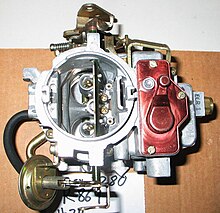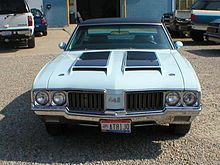How much do you care for your car tyres? In fact, when was the last time you thoroughly checked the wear and tear on the tyres? In our busy life, we tend to focus merely on the outer shell of the car ignoring other essential parts. Tyres in the car are like limbs of an athlete. You don’t realise but your sprinter might be crippled thanks to your ignorance.
1 Tyre change
What’s the right time to replace the old tyre with a new one? Experts believe a tyre should not be used more than 10 years also depending on factors like total kilometres driven, driving style and climate conditions et al. Rubber compounds used Auto Bild India reveals how to avoid mavericks from ripping you off and find a reliable repair station to work on your car Tyres that will never tire Here are some tips to keep your car tyres in good shape over a long period of time in tyres contain anti-oxidising chemicals that help to slow down the natural aging process of untreated rubber. However, tyres do deteriorate with age, which increases the risk of tyre failure, and there are many ways in which this can be spotted. Cracking on the side wall of the tyre, caused by its flexing, distortion of tyre tread or deformation of the carcass of the tyre.
The tyre being used currently should be replaced with a newtyre when the tread wear indicator (1.6mm height) is exposed.
2 Wheel bolt
If wheelbolts aren’t provided by the manufacturer make sure bolts used aren’t too short, there are chances of the wheel jumping out, or too long, they can damage the suspension.
3. Rotation policy
Rotate tyre positions if any irregular wear is found on any of the tyre or after every 5,000km. The first rotation is important as it sets the stage for long and even tyre wear. Make sure that all the tyres are exposed to the road equally. Rotating tyres from time to time would ensure that all the tyres are sharing the burden equally and no tyre is under or over exposed. Some manufacturers provide uni-directional tyres which can’t be used both sides, hence can’t be rotated like regular tyres.
4 Drive smoothly
Guess who curses you the most when you apply emergency brakes? Not the cop, but your car tyres. Rough braking takes away life of your car tyre and leads to early wear and tear. It’s important to drive at a constant pace and avoid applying frequent brakes. Driving rashly and breaking regularly leads to tyre skidding resulting in tyre losing its tread much quicker.
5 Aquaplaning
During monsoons tyres become more vulnerable to wear and tear. Rainwater that lingers in the ruts of roads places demands on driving. When the ruts are deep, the risk of hydroplaning is high, but anticipatory driving and good treads can reduce the risk. New tyres are the best weapons against hydroplaning. A tread pattern that channels water out from between the tyre and the road is the most effective means of preventing hydroplaning. Make sure the tyres are keeping water at bay.
6. Careful with jack
A hydraulic car jack should be used, which guarantees easy working and proper safety of the car and the person at the time of replacing tyre. Otherwise a standard jack provided by the car manufacturer should do. The base where the punctured tyre is being replaced should be should be flat and firm.
7. Air-pressure
Tyre pressures should always be checked and corrected (if necessary) when they are cold. It is vital that tyre pressures are maintained at the levels recommended by the manufacturer to ensure maximum tyre life, safety, the best ride and handling characteristics. Over or under-inflating tyres is likely to seriously impair their performance and may prejudice the safe use of the vehicle. Over-inflation increases overall tyre diameter, decreases the amount of tread in contact with the road, decreases sidewall flexibility and affects road-adhesion. Under-inflation decreases overall tyre diameter, increases sidewall flexion, generates higher tyre operating temperatures and difficult vehicle handling characteristics. Running an under-inflated tyre may cause premature tyre failure. Both over and under-inflation adversely affect tyre life.
8. Tyre storage
First clean the tyres and mark the position. Store in cool and dry place, away from petrol, oil, grease and chemicals. Lying or standing: it depends on the correct storage. When tyres are stored they should be stored in a cool, dry place away from sources of sunlight, heat and ozone such as hot pipes and electric motors. Tyres should be stored so there is no danger of water collecting inside them. Be sure that surfaces on which tyres are stored are clean and free from grease, gasoline or other substances which could deteriorate the rubber. Tyres exposed to these materials during storage or driving may be weakened and subject to sudden failure.
9 Mix and match
Most passenger tyres today are radial tyres. For best performance, we recommend the same size and type of tyre be used on all four wheel positions unless the vehicle manufacturer specified different sizes, front and rear, as original equipment. Check the vehicle placard. If only two radials are mounted with two non-radials, the radials should be mounted on the rear. If tyres of different types are mixed on a vehicle in any configuration, they should not be used for long periods and speeds should be kept to a minimum. Mixing or matching of tyres on four-wheel drive vehicles requires special precautions. Always check vehicle manufacturers’ manual for their recommendations
10 Wheel-alignment
A wheel alignment is part of standard automobile maintenance that consists of adjusting the angles of the wheels so that they are set to the car maker’s specification. The purpose of these adjustments is maximum tyre life and vehicle-travel that is straight and true when driving along a straight and level road, although most machines and the technicians who use them set the alignment to adjust for crowned roads, as well as correct tracking when driving on turns. Wheel alignment should be done after every 5,000km or whenever any irregular wear on tyre is found.





 The angle of rotation for axle 1
The angle of rotation for axle 1 The angle of rotation for axle 2
The angle of rotation for axle 2 The bend angle of the joint, or angle of the axles with respect to each other, with zero being parallel or straight through.
The bend angle of the joint, or angle of the axles with respect to each other, with zero being parallel or straight through. and
and and the planes of rotation of each axle. These planes of rotation are perpendicular to the axes of rotation and do not move as the axles rotate. The two axles are joined by a gimbal which is not shown. However, axle 1 attaches to the gimbal at the red points on the red plane of rotation in the diagram, and axle 2 attaches at the blue points on the blue plane. Coordinate systems fixed with respect to the rotating axles are defined as having their x-axis unit vectors (
and the planes of rotation of each axle. These planes of rotation are perpendicular to the axes of rotation and do not move as the axles rotate. The two axles are joined by a gimbal which is not shown. However, axle 1 attaches to the gimbal at the red points on the red plane of rotation in the diagram, and axle 2 attaches at the blue points on the blue plane. Coordinate systems fixed with respect to the rotating axles are defined as having their x-axis unit vectors ( and
and  ) pointing from the origin towards one of the connection points. As shown in the diagram,
) pointing from the origin towards one of the connection points. As shown in the diagram, ![\hat{\mathbf{x}}_1=[\cos\gamma_1\,,\,\sin\gamma_1\,,\,0]](http://upload.wikimedia.org/math/a/c/a/aca5995a132783341b0dba0c2b09435c.png)
![\hat{x}=[1,0,0]](http://upload.wikimedia.org/math/3/b/a/3bac86090d30cc463a12cd3c20dbb933.png) being rotated through euler angles
being rotated through euler angles  ]:
]:![\hat{\mathbf{x}}_2 = [-\cos\beta\sin\gamma_2\,,\,\cos\gamma_2\,,\,\sin\beta\sin\gamma_2]](http://upload.wikimedia.org/math/8/c/a/8ca0854ee6f68be4fc2accf3b48142c9.png)


![\gamma_2=\tan^{-1}[\tan\gamma_1/\cos\beta]\,](http://upload.wikimedia.org/math/b/6/4/b644d0f7bd2abdee82fc5e76a398db8f.png)
 :
:
 and
and  :
:
 and
and  :
:







